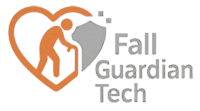🩺Understanding why older adults fall is the first step to protecting their independence.
Introduction
Falls among older adults are not accidental events but result from complex interactions between individual vulnerabilities and environmental hazards. Identifying these risks is critical to effective prevention. Below are scientifically proven factors contributing to senior falls:
🔍 I. Intrinsic Factors: Health & Physiology
Rooted in age-related changes, chronic conditions, and behaviors.
- 🦵 Functional Decline & Chronic Conditions
- Age: Risk rises sharply after 85; men face higher fall-related mortality than women.
- Musculoskeletal Issues: Weak muscles (especially legs), osteoporosis (increasing fracture risk), and arthritis impair stability.
- Neurological Disorders: Stroke, Parkinson’s, or neuropathy disrupt balance, coordination, and reflexes.
- Sensory Loss: Poor vision/hearing delays hazard detection.
- 💊 Medication Side Effects
Drugs like sedatives, antidepressants, blood pressure pills, or diuretics cause:- Dizziness or drowsiness
- Low blood pressure upon standing (orthostatic hypotension).
- 🧠 Cognitive & Psychological Risks
- Dementia or impaired cognition reduces judgment and attention.
- Fear of falling limits activity, weakening muscles and increasing future fall risk.
- **⚠️ Behavioral Risks**
- Sedentary lifestyles → muscle loss
- Alcohol use → poor coordination
- “I’m fine” mentality → refusing assistive devices.
🌍 II. Extrinsic Factors: Environmental Dangers
50%+ of falls link to surroundings:
- 🏠 Home Hazards
- Slippery floors (wet bathrooms, loose rugs)
- Poor lighting in hallways/stairs
- Cluttered pathways or unstable furniture
- Lack of grab bars in showers/toilets.
- 🚧 Community & Social Risks
- Icy sidewalks, uneven pavements, poor street lighting
- Social isolation: Living alone reduces emergency support.
💡 Key Takeaway: Prevention Is Multifaceted
Falls stem from overlapping risks. Effective prevention requires:
✅ Medical management of chronic conditions & medication reviews.
✅ Home safety modifications (e.g., non-slip mats, lighting upgrades).
✅ Strength/balance exercises (Tai Chi improves stability).
✅ Regular vision/hearing checks and using canes/walkers if needed.
🌟 Pro Tip: The CDC’s STEADI initiative (Stopping Elderly Accidents, Deaths & Injuries) offers free checklists for home safety and risk assessment.
